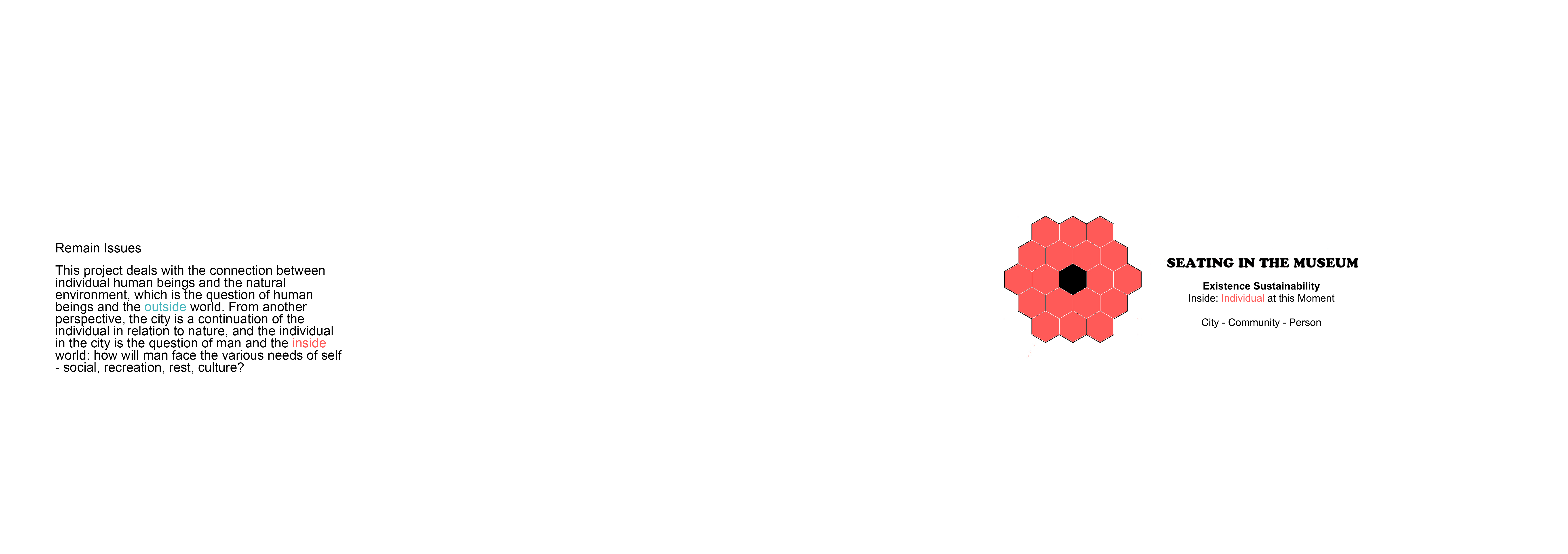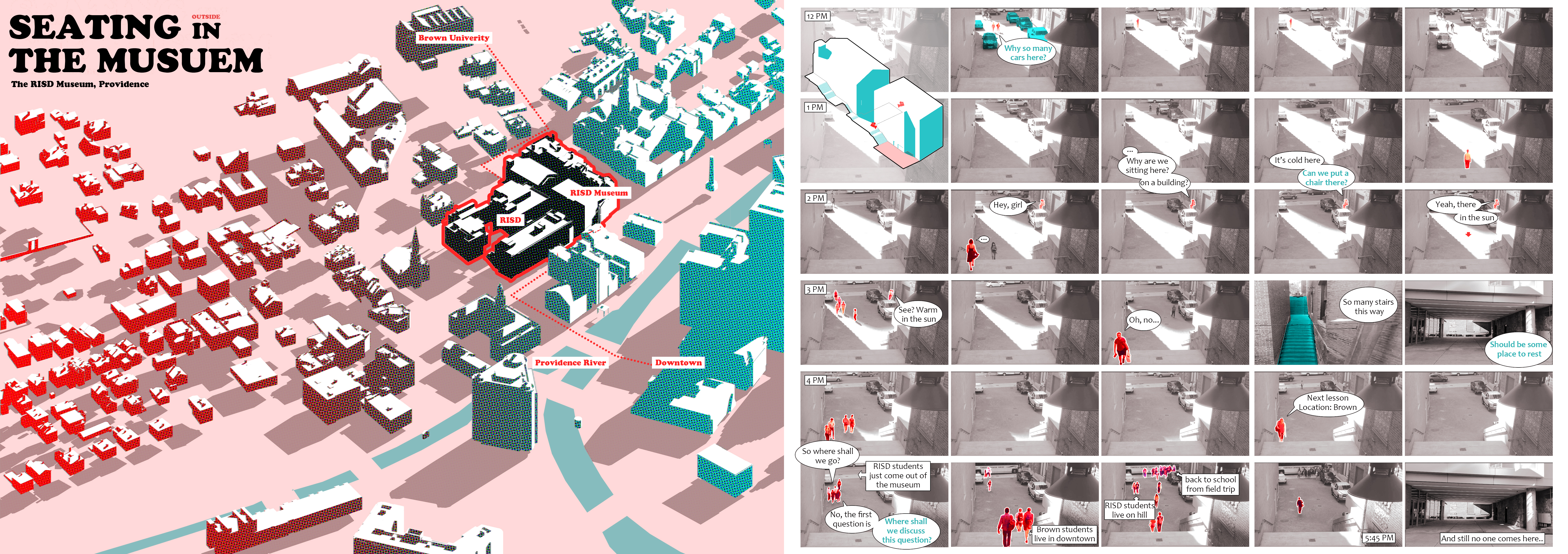→ 项目选址|Location
→ 项目说明|Description
景观是对建筑和城市空间二元关系的消解。
并不存在什么图底关系,我们身处的空间是连续的。
唯有连续的空间能让文化在城市中持续,而不是禁锢的美术馆中。
Landscape is the dissolution of the dual relationship between architecture and urban space.
There is no picture-bottom relationship, the space we live in is continuous.
Only a continuous space can allow culture to sustain in the city, not in a confined art gallery.
坐与行,是一种对立;
亦或者说是空间连续的两种方式。
这两者在美术馆内部和外部同等重要。
Sitting and walking are a kind of opposition;
Or in other words, two ways of spatial continuity.
These two are equally important inside and outside the museum.
美术馆外的座椅位于美术馆几栋建筑之间的空间:
二元关系中的“非建筑”空间;
也不被视为“有用”的城市空间。
但它可以成为消解建筑内与外、建筑与城市二元对立的
连续。
The seats outside the museum are located in the space between several buildings:
The "non-architectural" space in the dual relationship;
Nor is it regarded as a "useful" urban space.
But it can be a solution to the dual opposition between the inside and outside of the building, between the building and the city.
Continuity.
座椅的设置是对这个被忽视空间的重新设计。
考虑所有经过或进出美术馆的人坐与行的需求,
这是第一重连续。
The setting of the seat is a redesign of this neglected space.
Consider the needs of all people who pass by or enter and leave the museum to sit and walk,
This is the first continuity.
座椅的使用是对美术馆的强调。
无论是其本身引起的对美术馆存在的注意,
或是让休憩者面对玻璃内的展品,
都将文化与艺术带出美术馆。
这是第二重连续。
The use of seats is an emphasis on the museum.
Regardless of the attention to the existence of the art gallery caused by itself,
Or letting the resters face the exhibits in the glass,
Both bring culture and art out of the museum.
This is the second continuity.
座椅的外形是对美术馆及艺术的回应,
以及对空间连续性的象征。
这是第三重连续。
The shape of the seat is a response to the museum and art,
And a symbol of the continuity of space.
This is the third continuity.
→ 下个项目|Next Project
→ 项目说明|Description
景观是对建筑和城市空间二元关系的消解。
并不存在什么图底关系,我们身处的空间是连续的。
唯有连续的空间能让文化在城市中持续,而不是禁锢的美术馆中。
Landscape is the dissolution of the dual relationship between architecture and urban space.
There is no picture-bottom relationship, the space we live in is continuous.
Only a continuous space can allow culture to sustain in the city, not in a confined art gallery.
坐与行,是一种对立;
亦或者说是空间连续的两种方式。
这两者在美术馆内部和外部同等重要。
Sitting and walking are a kind of opposition;
Or in other words, two ways of spatial continuity.
These two are equally important inside and outside the museum.
美术馆外的座椅位于美术馆几栋建筑之间的空间:
二元关系中的“非建筑”空间;
也不被视为“有用”的城市空间。
但它可以成为消解建筑内与外、建筑与城市二元对立的
连续。
The seats outside the museum are located in the space between several buildings:
The "non-architectural" space in the dual relationship;
Nor is it regarded as a "useful" urban space.
But it can be a solution to the dual opposition between the inside and outside of the building, between the building and the city.
Continuity.
座椅的设置是对这个被忽视空间的重新设计。
考虑所有经过或进出美术馆的人坐与行的需求,
这是第一重连续。
The setting of the seat is a redesign of this neglected space.
Consider the needs of all people who pass by or enter and leave the museum to sit and walk,
This is the first continuity.
座椅的使用是对美术馆的强调。
无论是其本身引起的对美术馆存在的注意,
或是让休憩者面对玻璃内的展品,
都将文化与艺术带出美术馆。
这是第二重连续。
The use of seats is an emphasis on the museum.
Regardless of the attention to the existence of the art gallery caused by itself,
Or letting the resters face the exhibits in the glass,
Both bring culture and art out of the museum.
This is the second continuity.
座椅的外形是对美术馆及艺术的回应,
以及对空间连续性的象征。
这是第三重连续。
The shape of the seat is a response to the museum and art,
And a symbol of the continuity of space.
This is the third continuity.
→ 下个项目|Next Project






